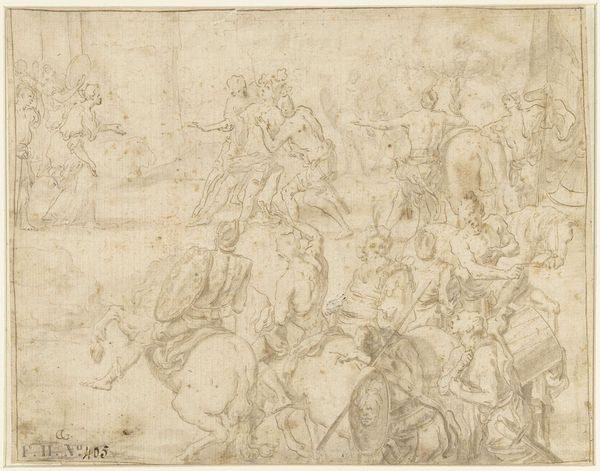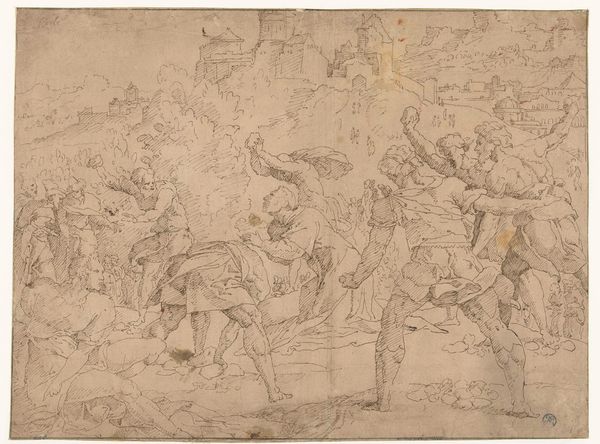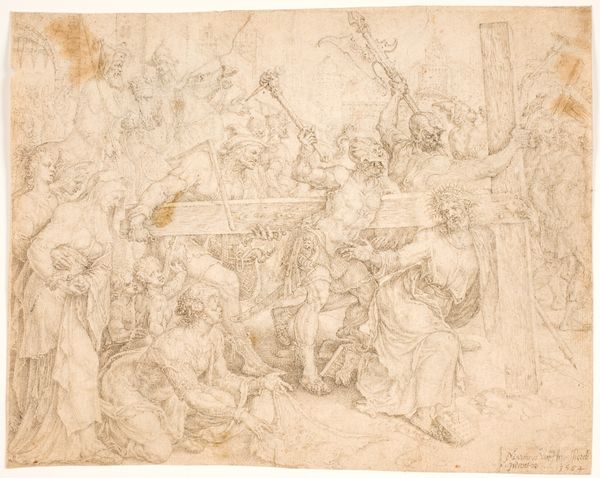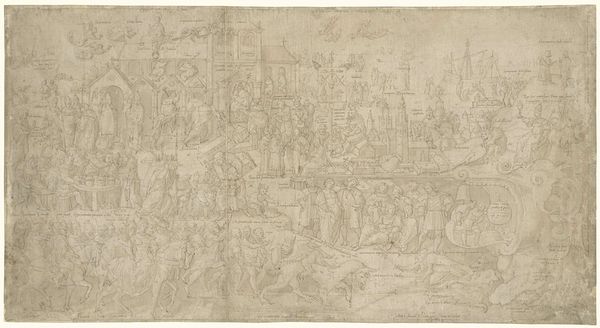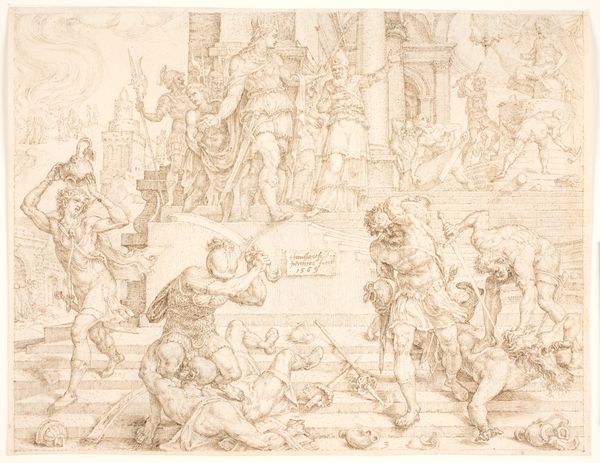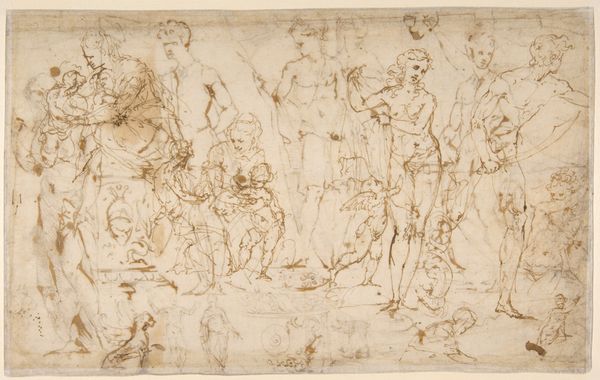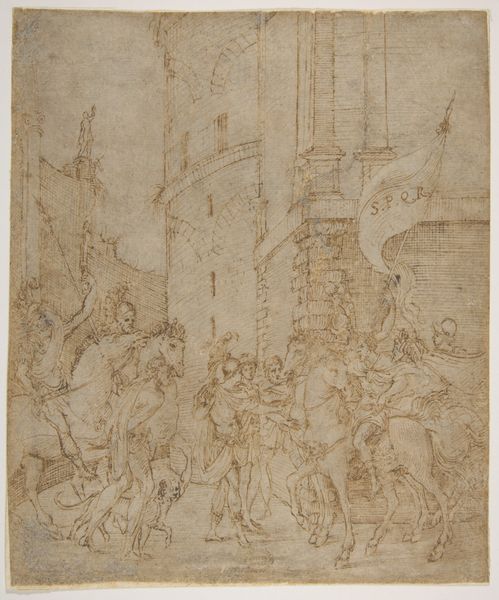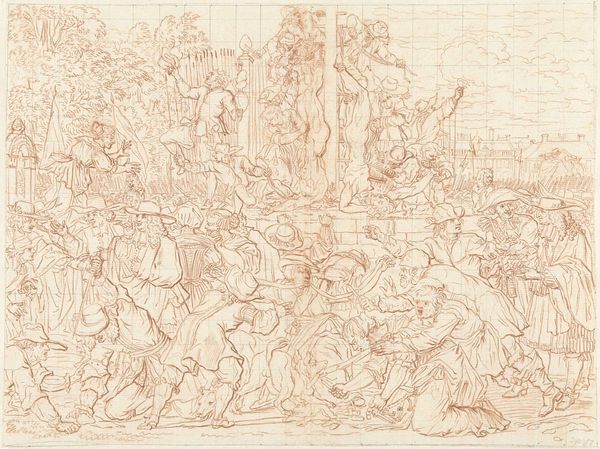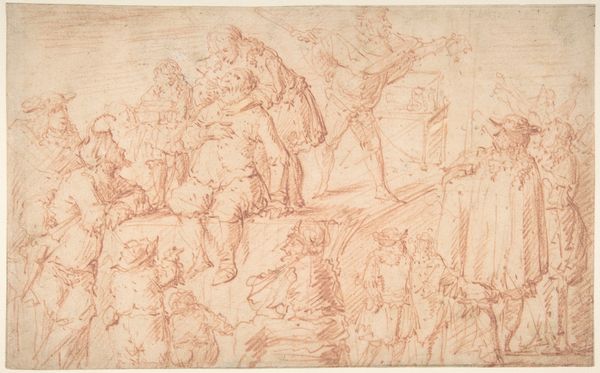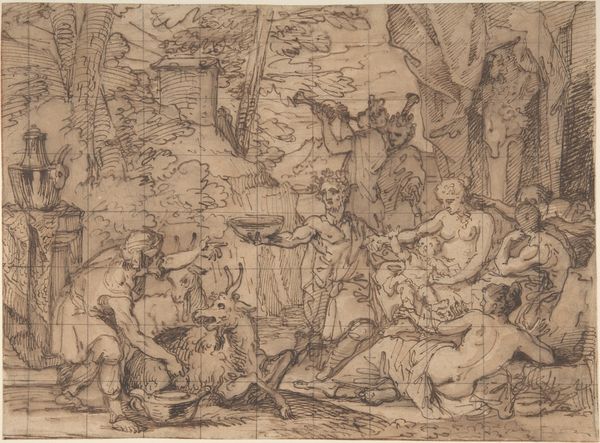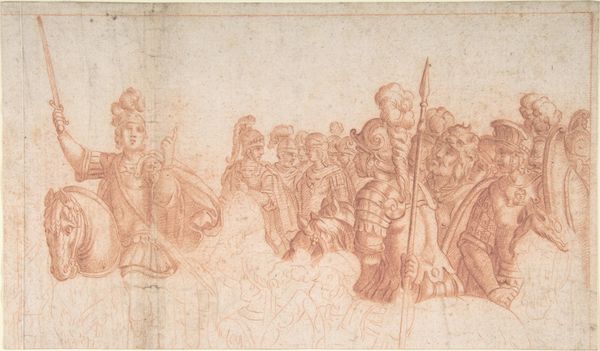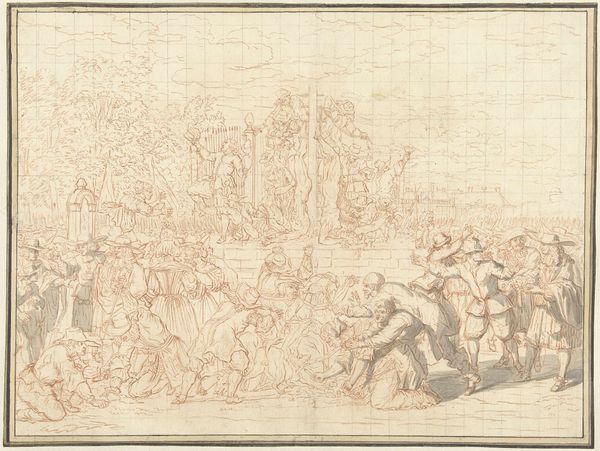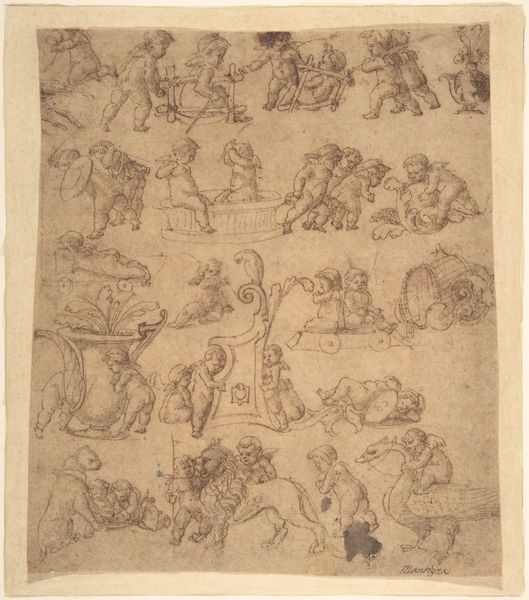
drawing, paper, ink
#
drawing
#
narrative-art
#
ink painting
#
etching
#
figuration
#
paper
#
11_renaissance
#
ink
#
line
#
history-painting
#
italian-renaissance
Dimensions: 287 mm (height) x 467 mm (width) (bladmaal)
Curator: Andrea Mantegna, active during the Italian Renaissance, likely created this drawing in ink on paper, entitled *The Martyrdom of the Ten Thousand Christians*. The date is approximated from 1491 to 1542, placing its creation within a tumultuous time of artistic and religious upheaval. Editor: The initial impact is one of restrained chaos. Despite the obviously violent scene depicted, the monochromatic palette and the intricacy of the lines give it a strangely detached, almost academic, feeling. It doesn’t scream horror, it murmurs of it. Curator: Absolutely, that tension speaks volumes about the period. Consider the historical context; the representation of martyrdom served not only as a devotional tool but also as a political message, subtly contesting power structures. Mantegna's detailed rendering would have amplified the impact on contemporary viewers familiar with the narratives of early Christian persecution. The figure in the high setting could even reflect papal authority or another governing power behind these events. Editor: I am wondering, how might our modern audiences interpret this representation of martyrdom? In our era saturated with hyper-realistic depictions of violence, especially against religious minorities, does this drawing retain its intended emotional power, or does it get lost in the broader landscape of images? Is this, instead, a reflection on violence itself, especially as carried out against the vulnerable? Curator: The politics of imagery are always contingent on context. For Renaissance viewers, images of martyrdom may have held specific meaning linked to their faith. A contemporary reading could deconstruct the drawing's composition to unpack the ways in which narratives of persecution have historically served ideological ends. Considering its role in public understanding, the systematic depiction of these martyrdoms underscores a continued problem when discussing religion as an 'excuse' for violent acts. Editor: It prompts us to reflect critically not just on the past but on the persistent rhetoric surrounding religious violence, especially when understanding issues of intersectionality in faith-based marginalization. It pushes viewers to question power structures, and challenge narratives to advocate for change. Curator: Examining how artistic choices can shape public memory provides ways of thinking through issues, like social justice today. Thank you for sharing that valuable lens. Editor: Thank you; it is vital we see these histories with the contemporary viewer in mind.
Comments
No comments
Be the first to comment and join the conversation on the ultimate creative platform.
